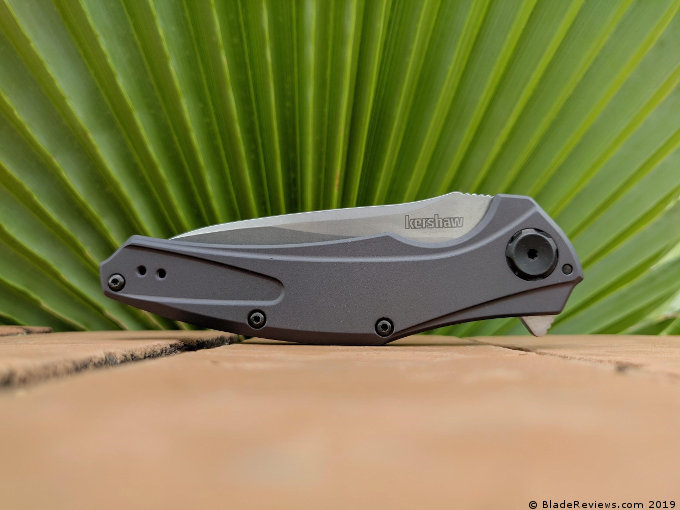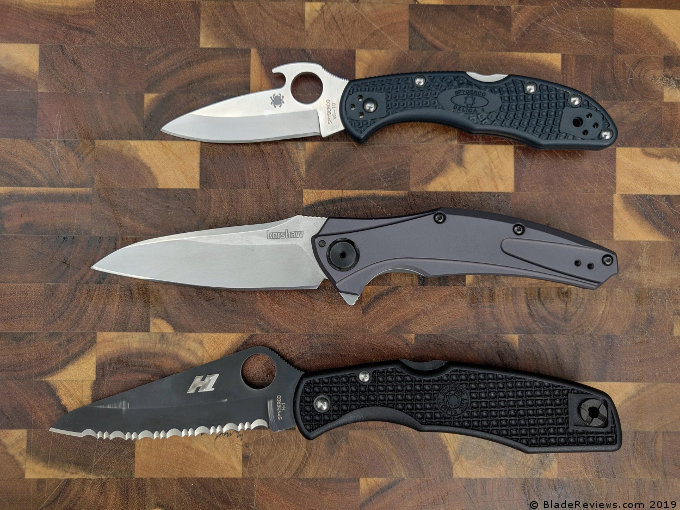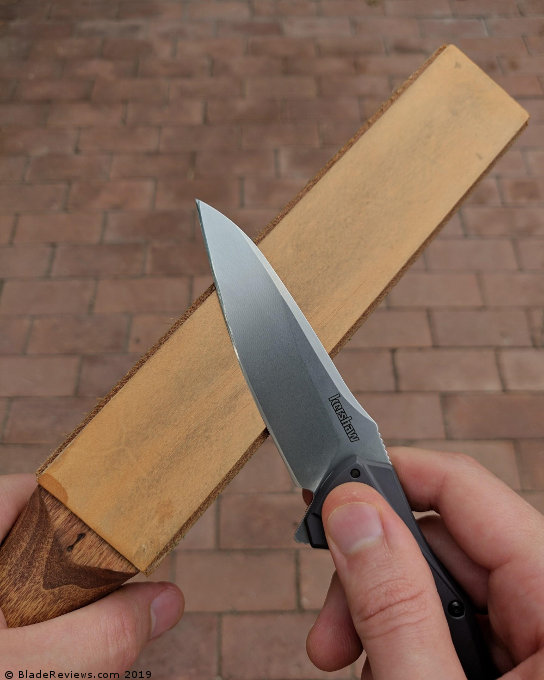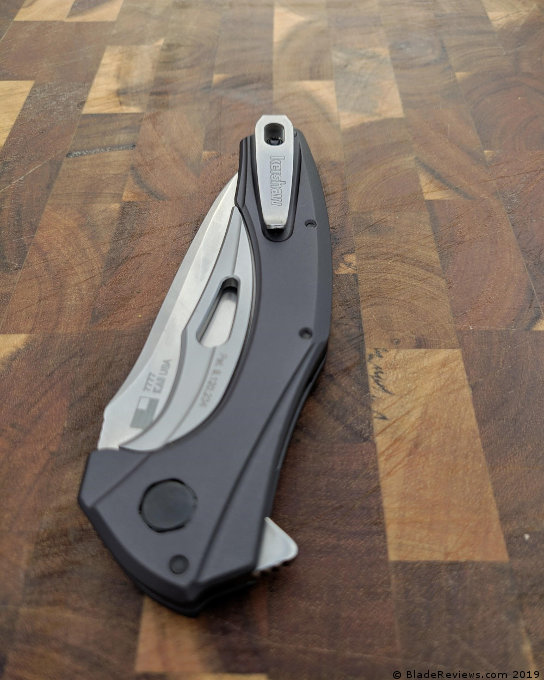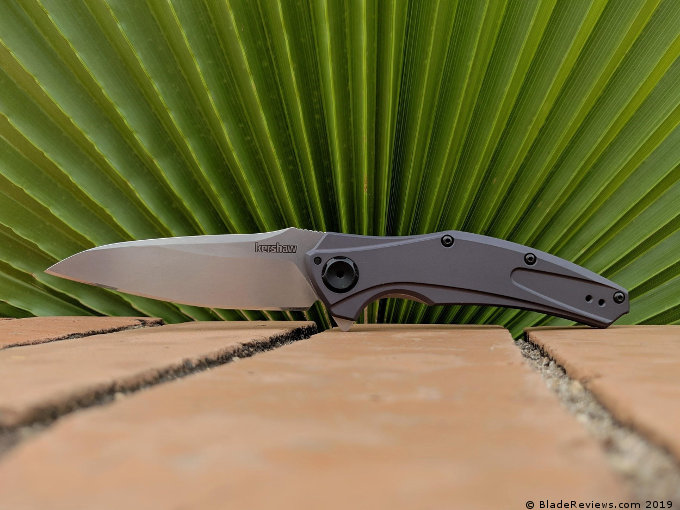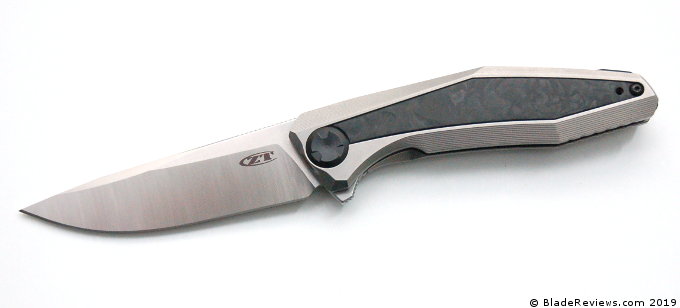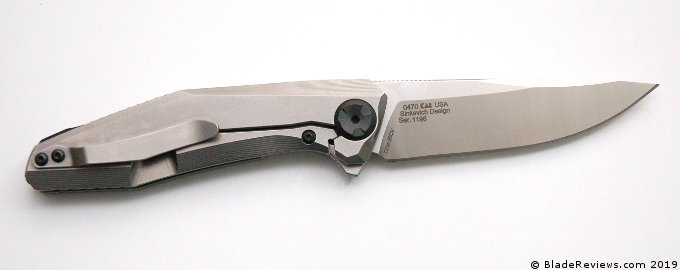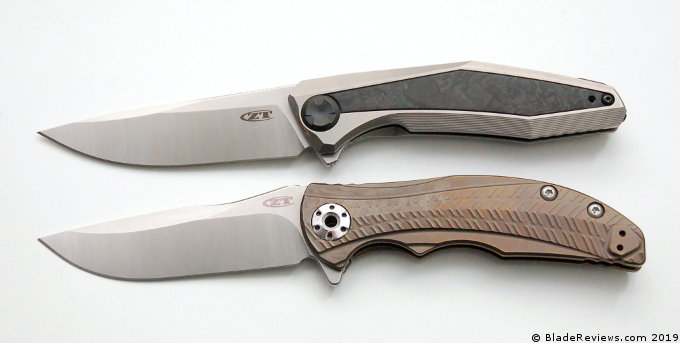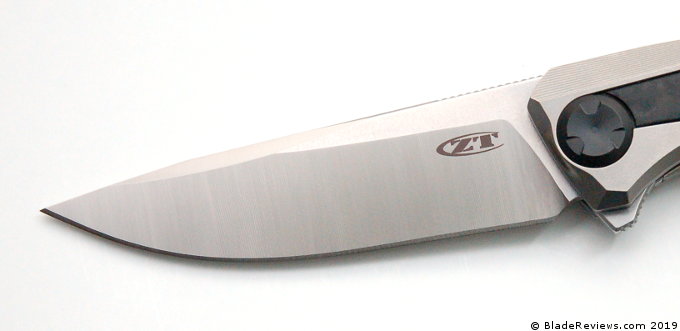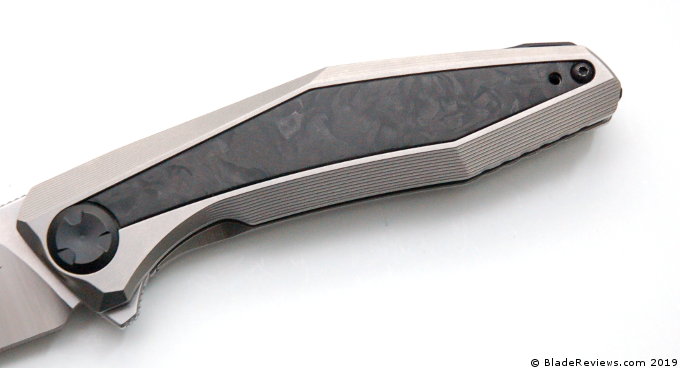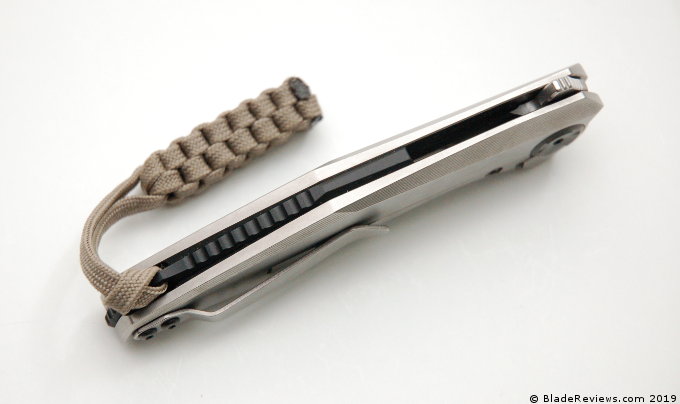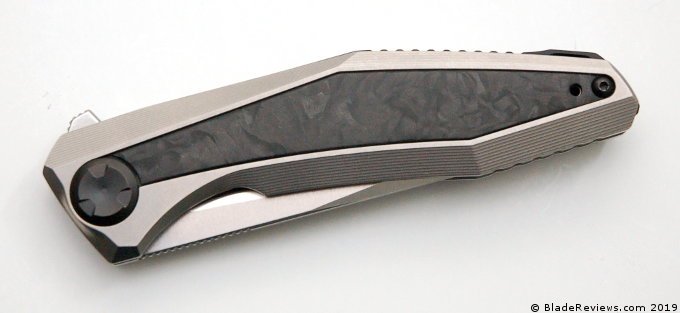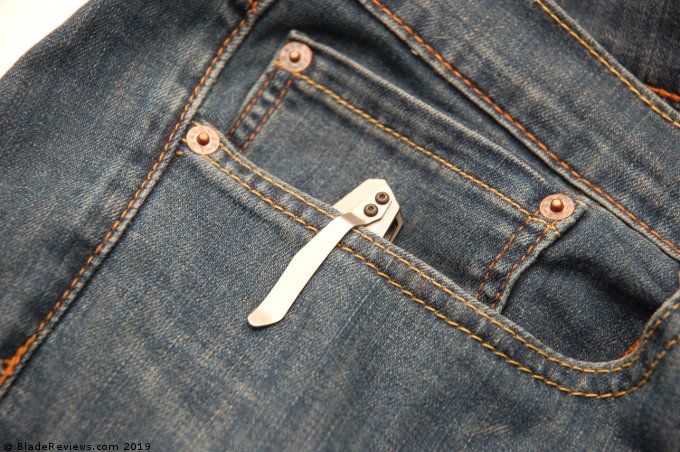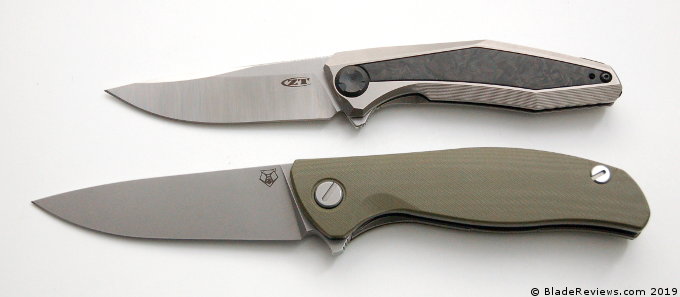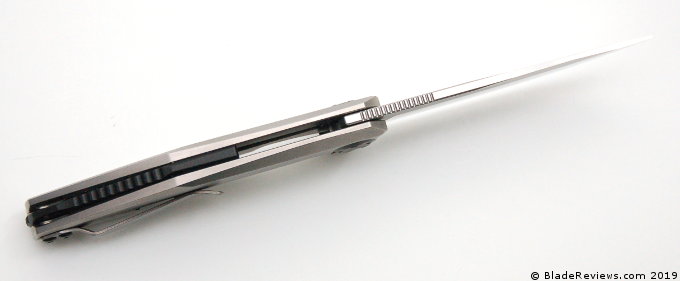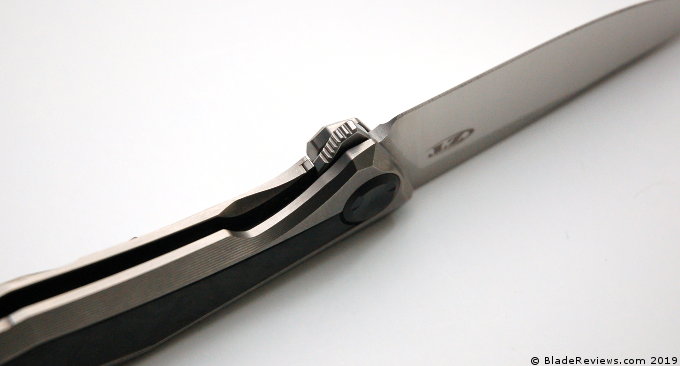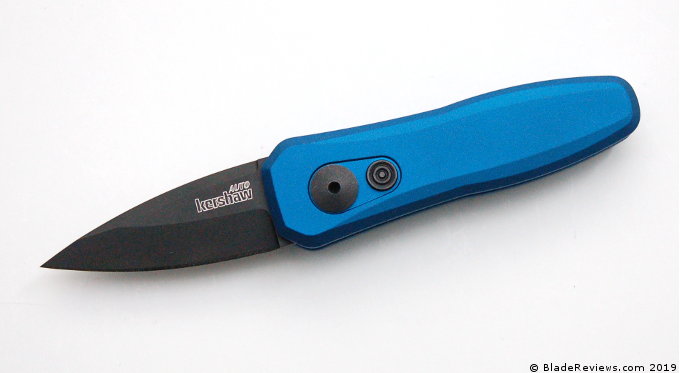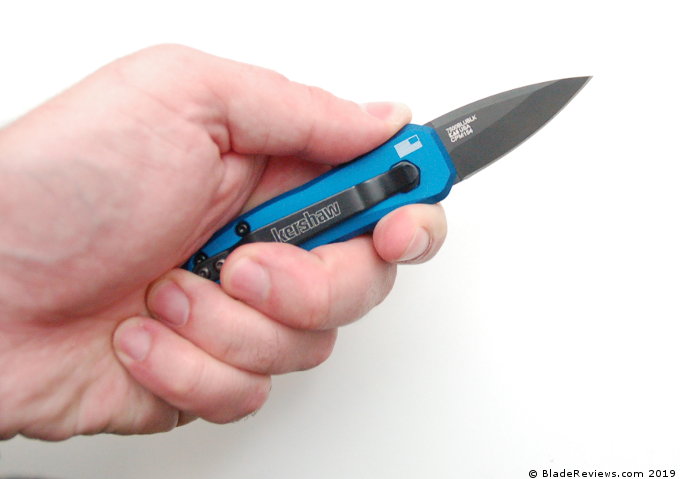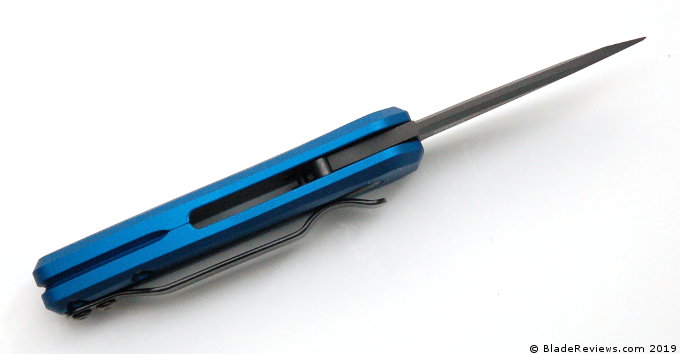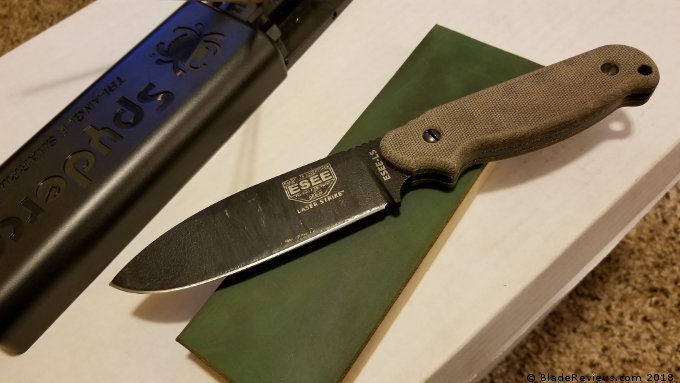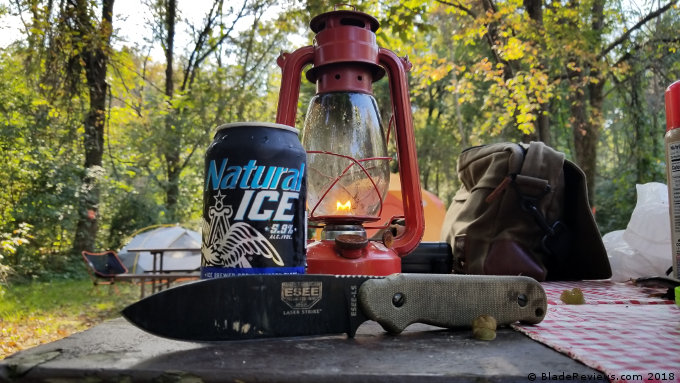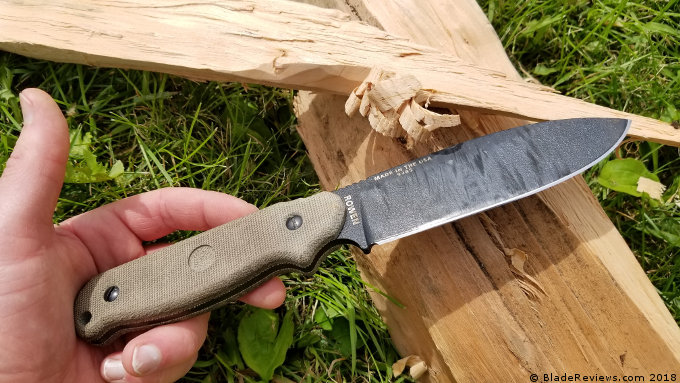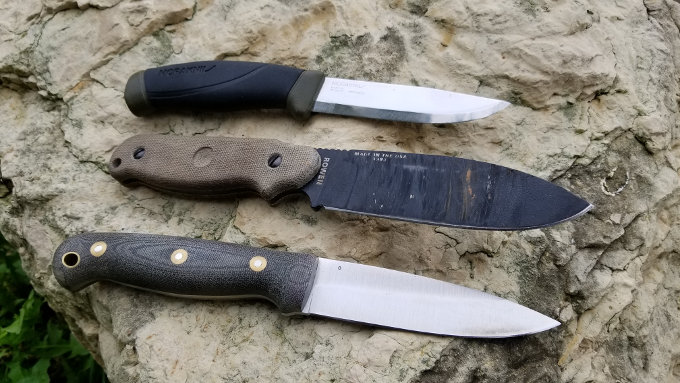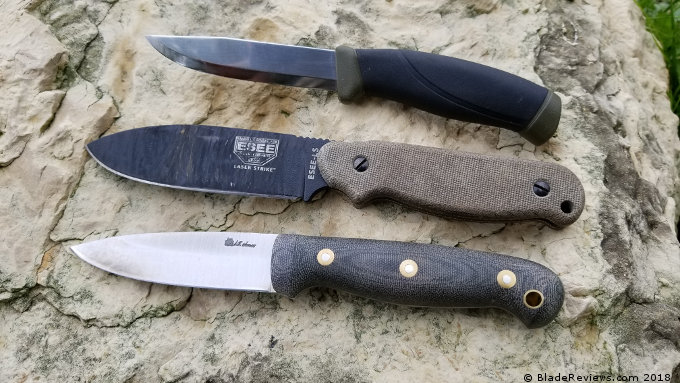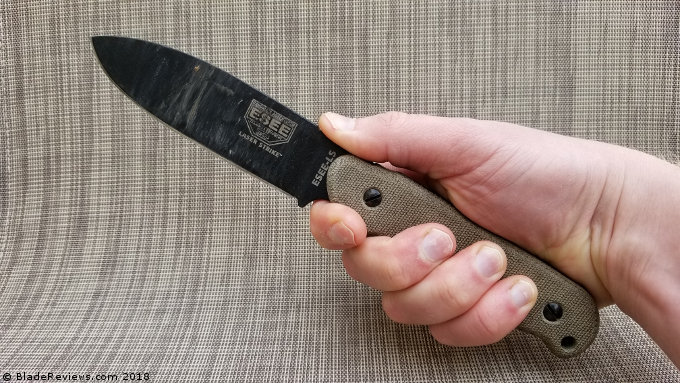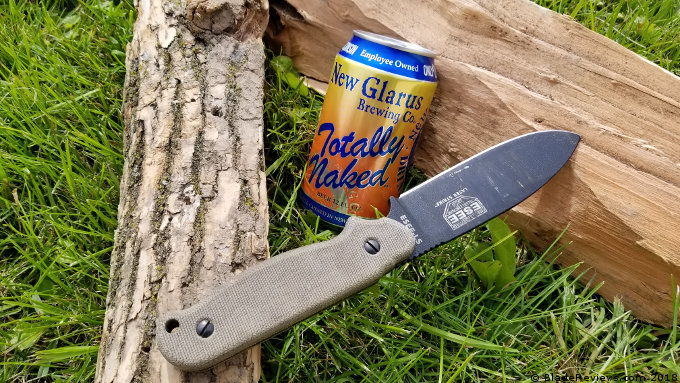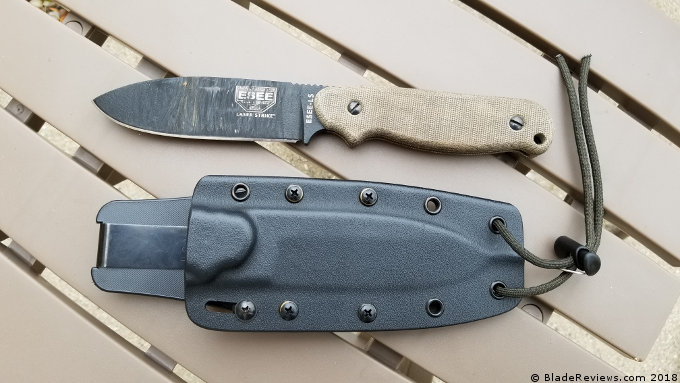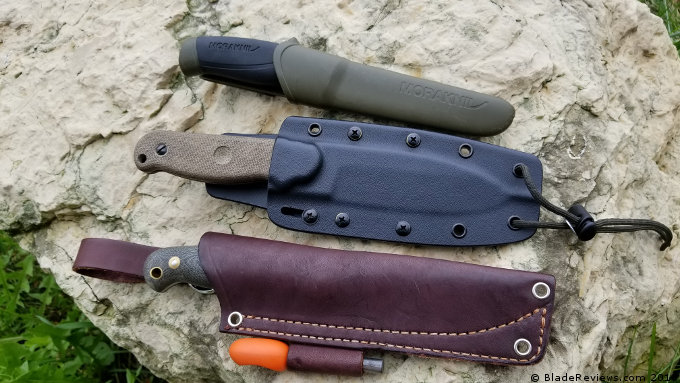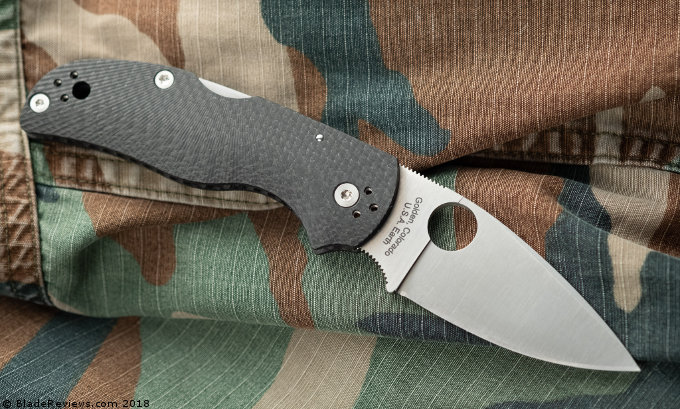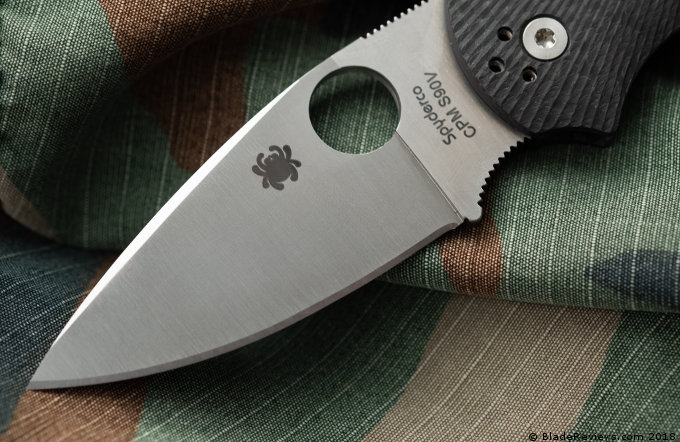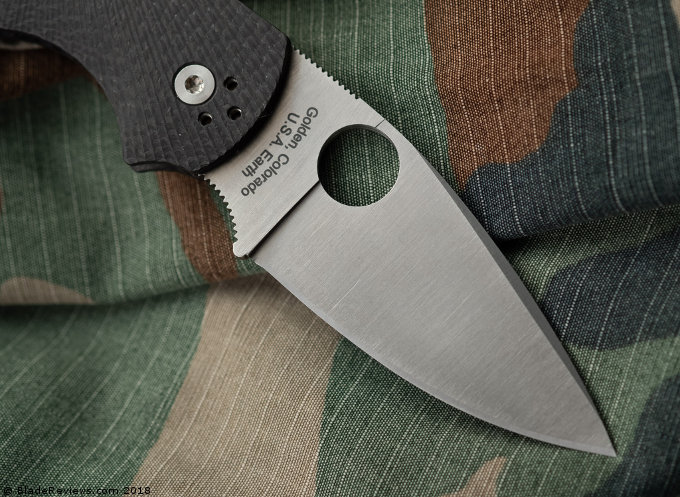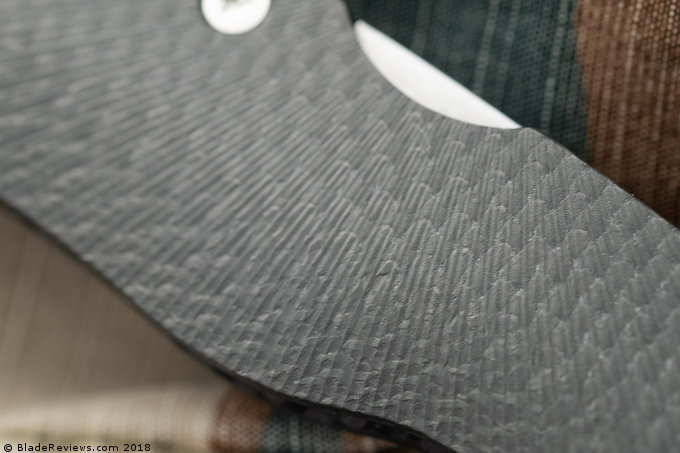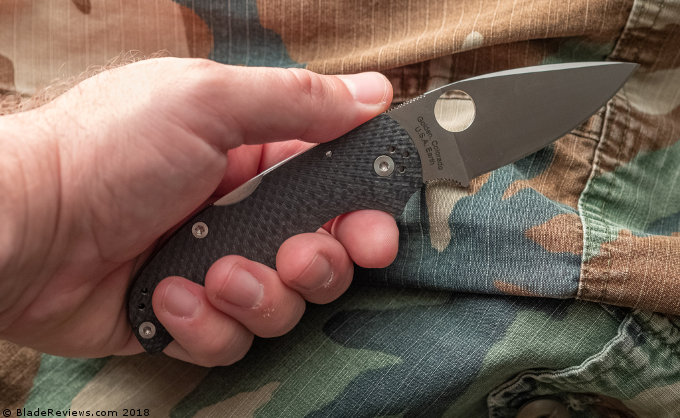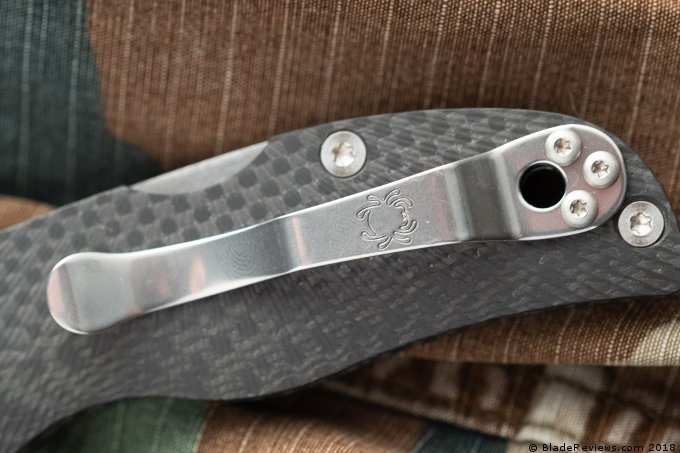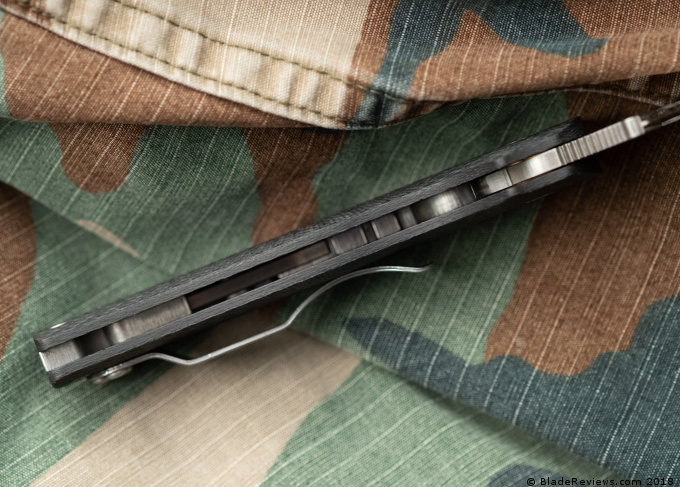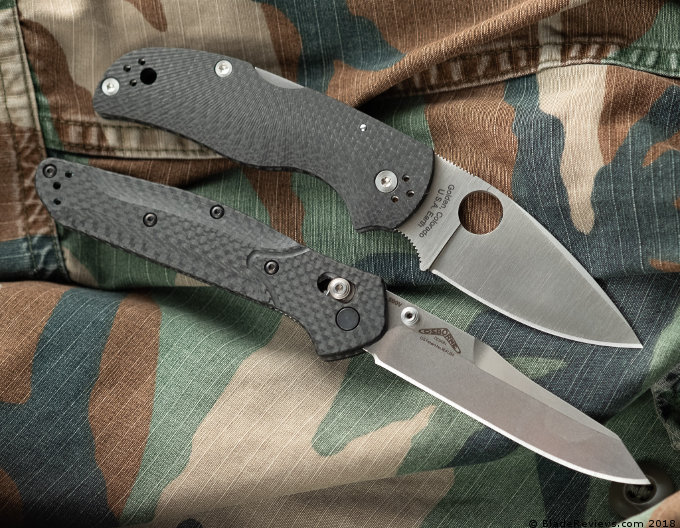The La Griffe, which apparently means ‘the claw’ in French, is designed by Fred Perrin and produced by Emerson. Fred Perrin is a French SpecOps veteran and martial arts practitioner who also designs knives on the side. Most of his designs are more or less designed to be weapons and his designs come from a martial arts background.
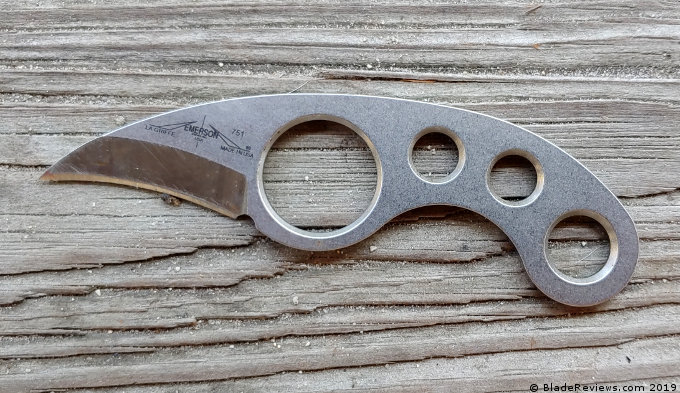
Buy the Emerson La Griffe at BladeHQ
The La Griffe is really no different. It’s a short blade, with a short handle not necessarily designed for EDC tasks. Of course, a knife is a tool and is adaptable. Emerson makes a La Griffe called the White Water with an all serrated edge. As a kayaker, I can certainly see why one would want the finger hole for a good grip while on the water. I use the Gerber Remix as my kayak knife and it has a similar finger hole.
While it can be pressed into other tasks the La Griffe is a small, easily concealed weapon that most of us could find a way to carry with ease.
General Dimensions and Blade Details
The La Griffe sports a short 1.75-inch blade that blends into a 3.125-inch handle for a total length of 4.875 inches. It weighs only 1.5 ounces and is .125 inches thick. The knife is made from 154 CM steel that seems to be a favorite of Emerson and a good all-around knife steel.
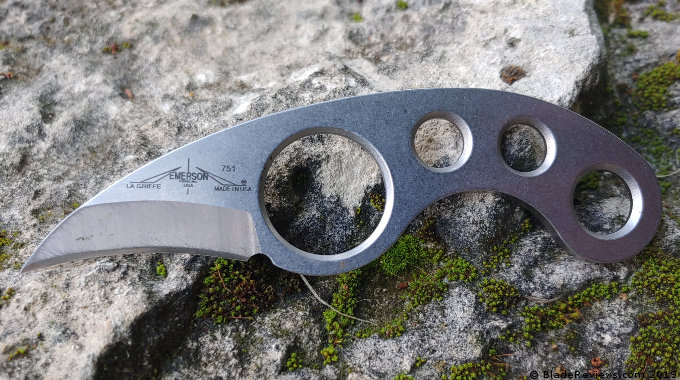
It can get quite sharp, isn’t terribly difficult to sharpen, holds a decent edge and is very strong. Additionally, it’s corrosion-resistant which is an important feature if you are wearing it concealed against the body where it can be exposed to sweat.
Another Emerson calling card is the use of a chisel grind blade. That makes this a rough cutter for fine work but does make it easy to sharpen and supposedly it’s a stronger edge. As a knife designed to be a weapon, the chisel grind makes sense. It doesn’t need to be an edge designed for super fine and controllable cuts. It does need to be strong though, and being easy to sharpen is another excellent benefit.
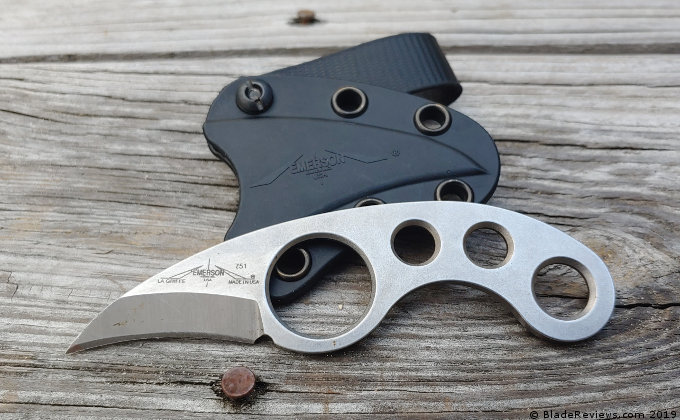
The blade also comes in a stonewashed or black cerakoted finish. Mine, as you can see, is the stonewashed variant. The black cerakote adds a layer of additional protection and would likely be less eye-catching if accidentally exposed while being concealed.
The short blade and handle, as well as the relativeness thinness of the entire package, limits the scope of use for the knife. When a knife is purpose-built to be a small weapon it’s difficult to put it in play for other tasks.
Handle and Ergonomics
The handle is very thin and is designed to be easy to conceal. The downside to this is that it’s not extremely comfortable for heavy use or work. It’s very short as well and offers little leverage. It seems to be best suited for quick stabs and slashes.

The finger hole ensures the knife stays put. This is a must-have because the handle is so short and smooth. Without it gaining a grip on this knife would be near impossible. The handle does conform to the hands though. The curve in the middle goes around the middle finger and leverages out over the ring finger.

Overall it’s comfortable to hold, but it’s not going to be a heavy-duty worker. Splitting cardboard boxes quickly makes your hands tired. Fatigue and pain set in around the finger ring as well. I attempted to use the knife to help cut USPSA targets from sheets of cardboard and found the knife difficult to control.
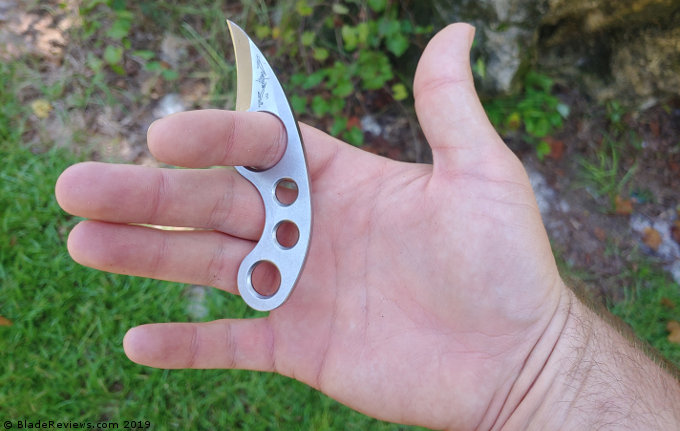
The short and thin handle does make the knife easy and comfortable to conceal. It can be worn as a neck knife, or you can purchase an IWB loop as I did. The knife disappears and is invisible under a t-shirt.
Sheath
The included sheath is very simple and made from kydex. It covers the blade perfectly and locks in on the front portion of the finger ring. A distinct snap is heard as the knife locks in and its held in very tight. The majority of the finger ring is left exposed and you can easily fit your finger in and draw the knife.

The sheath also offers plenty of places to add accessories through the six holes that run from the top to the bottom. Plenty of places to add an IWB loop or necklace for carrying. The sheath is naturally ambidextrous and also very lightweight and thin. It won’t add much bulk if concealment is your goal.
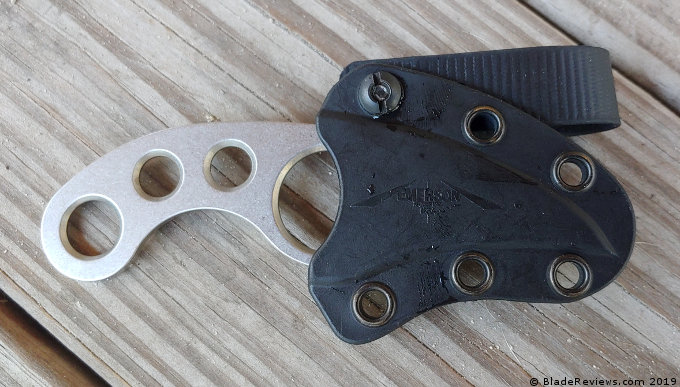
Emerson La Griffe Review – Final Thoughts
The La Griffe by Fred Perrin and Emerson certainly succeeds as an easy to carry knife. It’s a vicious little tool that’s sharp enough to cut deeply. In a pinch, it would appear to be an excellent defensive weapon. Something you can use to cause injury, make space, and escape from an attacker. The simple design makes it impossible to drop and very difficult to have it taken from you.
My advice would be to purchase the knife if you want something easy and lightweight to carry as a defensive weapon. If you are looking for a standard EDC knife I’d look elsewhere. That’s not an insult to the La Griffe, just a reality-based observation. The La Griffe is easier to carry than most knives, especially for women who may not have actual pockets on their clothing. The La Griffe is well built and fearsome, and that’s what a defensive weapon should be.
I recommend purchasing the Emerson La Griffe at Amazon or BladeHQ. Thanks for checking out the review.

